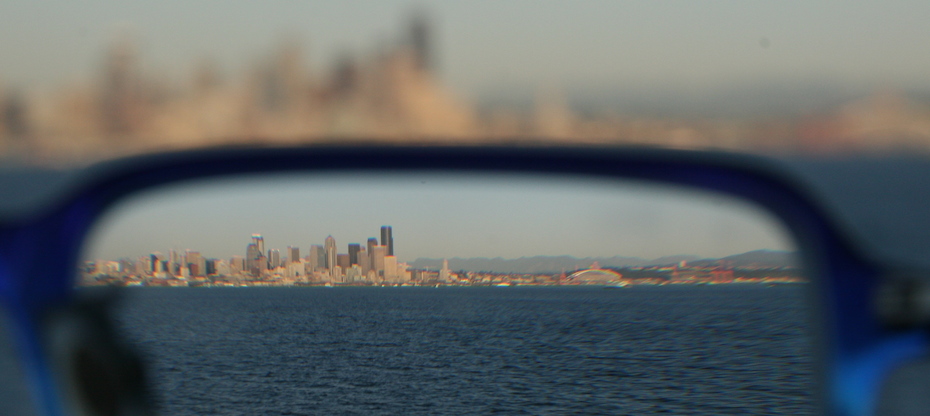After light enters the eye it is refracted as it passes through the cornea. It then passes through the pupil and is further refracted by the lens. Normally, light is focused by the cornea and lens to form a sharp image on the retina. That’s how we see. If the eye is not able to focus light exactly on the retina, we suffer from poor vision. How does it happen?
What is nearsightedness?
Sometimes the eyeball is too long or the curve of the cornea is too steep, so the light comes to a focus before it reaches the retina. As a result, objects at the distance seem blurred, and close objects are clear. This phenomenon is called myopia or nearsightedness. Normally, most of us are born slightly farsighted (i.e. we see better the objects at a distance, than the ones close to us). This happens because at birth the eyes have not grown to their full length. After the eyes have grown to their full length (by around eight years of age), the sight becomes normal. This is known as emmetropia. However, sometimes the eye ball continues to grow and becomes too long. That is how nearsightedness appears. The symptoms of the condition usually start around puberty and gradually get worse until the person (and the eye) is fully grown. Cases of nearsightedness can range from mild, where treatment may not be required, to severe, where a person’s vision is significantly affected.
What is farsightedness?
Farsightedness – in medical terms hypermetropia – occurs when the eyeball is slightly too short or the cornea is too flat. As a result, images are focused behind the retina at the back of the eye. In this case vision is blurred at short distances and attempts to read or use a computer can even cause headache and nausea. On the other hand, hypermetropia has advantages – farsighted people can see very distant objects and notice them often before others can even detect them. Farsightedness, like most eye conditions is usually inherited. It can be progressive or stationary, and vary from mild to severe cases. Hypermetropia also develops as age related condition, as the lens becomes incapable of bending at the right angle so that the image is focused on the retina.
How is it measured?
The ability of the eyes to refract light is measured in “diopters”. A diopter is a unit that defines the optical power of a lens. For example, the vision condition at -3.00 diopters or less describes a mild case of myopia, between -3.00 and -6.00 medium, greater than -6.00 diopters is a strong myopia. However, the good news is that people with vision issues (even severe cases) have no longer suffer from the myopia and hypermetropia. Both conditions can be easily corrected using prescription glasses, contact lenses or laser (refractive) surgery. With the correct diagnosis and treatment, most nearsighted and farsighted people are able to have a perfect vision. Talk to your ophthalmologist to evaluate your options.
